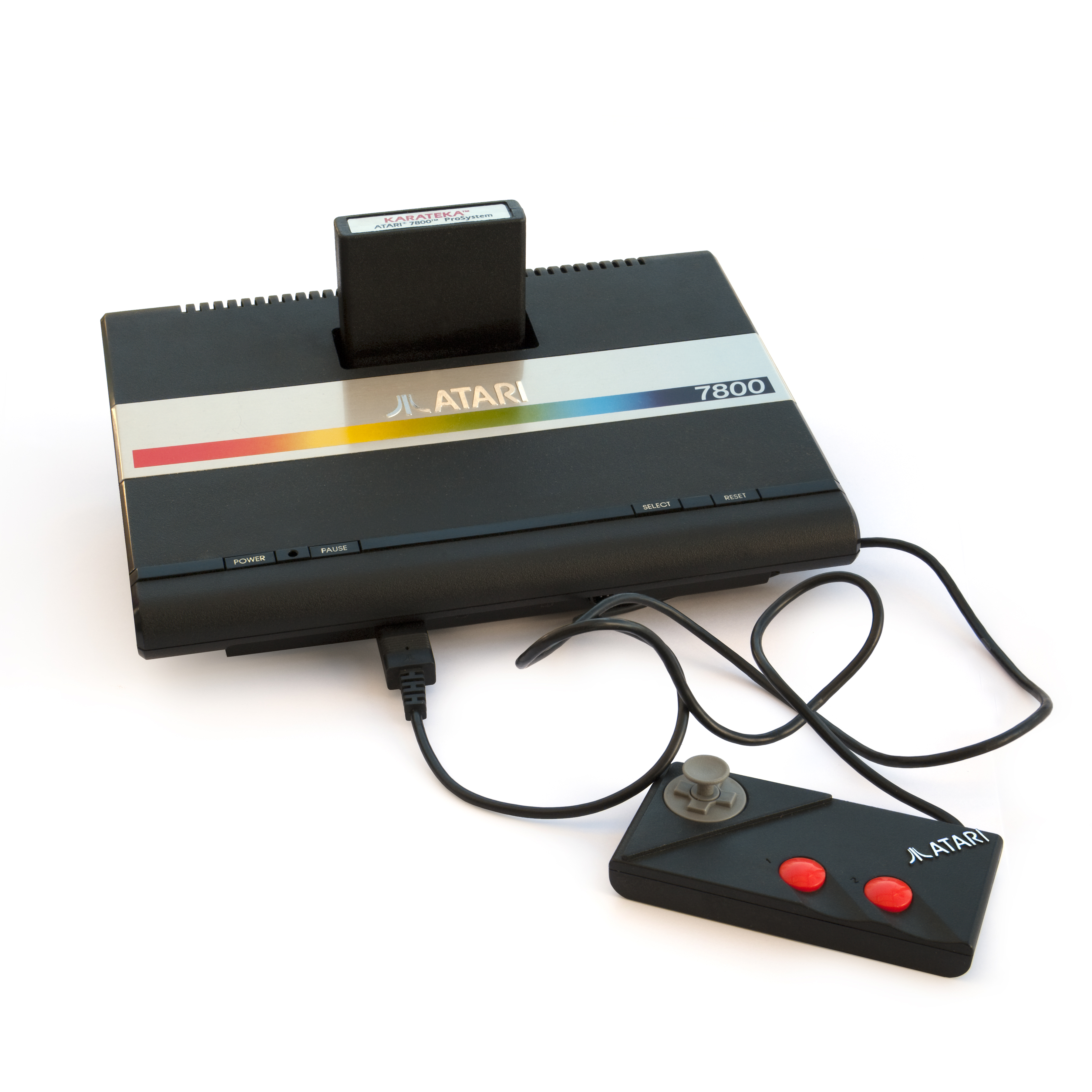Post by The Laird on Jul 20, 2014 15:47:29 GMT

The Atari 7800 ProSystem (to use its full name) has to be the biggest ever case of “what could have been” in video game history. The system came about off the back of the failed Atari 5200 SuperSystem. Consumers were annoyed by the 5200 because it was not backwards compatible with the 2600, was high in price, huge in size and had terrible analogue controllers that broke too easily. The main reason for this was that it was basically an Atari 400 computer in a console case and this was also a bone of contention as most of the games were just ported over. The 5200 was one of the many causes of the great video game crash in North America and never even saw a release in the UK, Europe or any other parts of the world making it the only Atari machine not to cross the ocean. Atari knew they had to act quickly if they were going to save their reputation and for the first time they turned to an outside company for help. General Computer Corporation, or GCC for short, started out making mod-kits for existing arcade games such as Super Missile Attack, which was sold as an enhancement board to Atari's Missile Command and Crazy Otto that was later sold to Midway and became Ms. Pacman. Atari sued promptly sued them but then dropped the suit and hired GCC to develop games for Atari after being suitably impressed by their work. Their biggest hit in the arcades was the brilliant Food Fight but it would be their development of the Atari 7800 that they would become best known for.
The 7800 was developed to be completely backwards compatible with the best selling Atari 2600 VCS and this was both a blessing and curse. The inclusion of the 2600 chips on the board gave it perfect compatibility but also left no room for a sound chip and meant that the 7800 was stuck using the dated 2-channel TIA chip for this purpose. The idea was that sound chips could be used within cartridges themselves and Atari were developing a low cost sound chip for this reason. Until then people could include the POKEY chip from the 8-bit computer range to provide more advanced sound and music. Unfortunately only two commercial games used a POKEY chip, Ballblazer and Commando, and the fabled low cost GUMBY chip never came to fruition due to the turmoil that Atari soon entered after the initial release of the 7800. The test market for the 7800 in 1984 was met with widespread acclaim and the press was extremely positive for the future of Atari. The 7800 had outperformed the new Nintendo Entertainment System, which was in test market at the same time, and was seen as the console to take the market forward. But Warner Brothers decided that they wanted out and promptly put Atari up for sale. Eventually Tramel Technology Ltd, headed by the former owner of rival company Commodore Jack Tramiel, purchased the consumer division of Atari but did not own the Atari 7800. It turned out that GCC had not been paid for their development of the system and a long argument between the new Atari Corp. and Warner ensued over the ownership of the system and who should pay GCC. This was eventually settled in November 1985, too late for the lucrative Christmas market, and the system was re-released in January 1986 with an advertising budget of just $300,000. In other cost saving measures at a cash strapped Atari they cancelled the keyboard add-on, high score cartridge, several games and removed the expansion port from new models. With its eventual full US release happening nearly 2 years after the test market the 7800 had lost its intended market. It’s launch line-up seemed dated compared to other systems of the time and Nintendo had already tied up all the best developers in contracts to only make games for their machine. The 7800 and its games were much cheaper than that of it’s rival though and it went on to forge a market for itself as a budget option and ended up selling nearly 4 million units in the US alone, nearly double that of another one of its rivals – the Sega Master System. Initially the 7800 wasn’t planned for release in the UK and Europe because Atari felt this was now a home computer market and pushed their XE and ST line there instead. However they changed their mind in 1987 after seeing the success of their own re-packaged 2600 Jr. and that of the Sega Master System too. The 7800 was fairly successful in Europe and had a major high street presence, the price difference over it's rivals was a big advantage.
